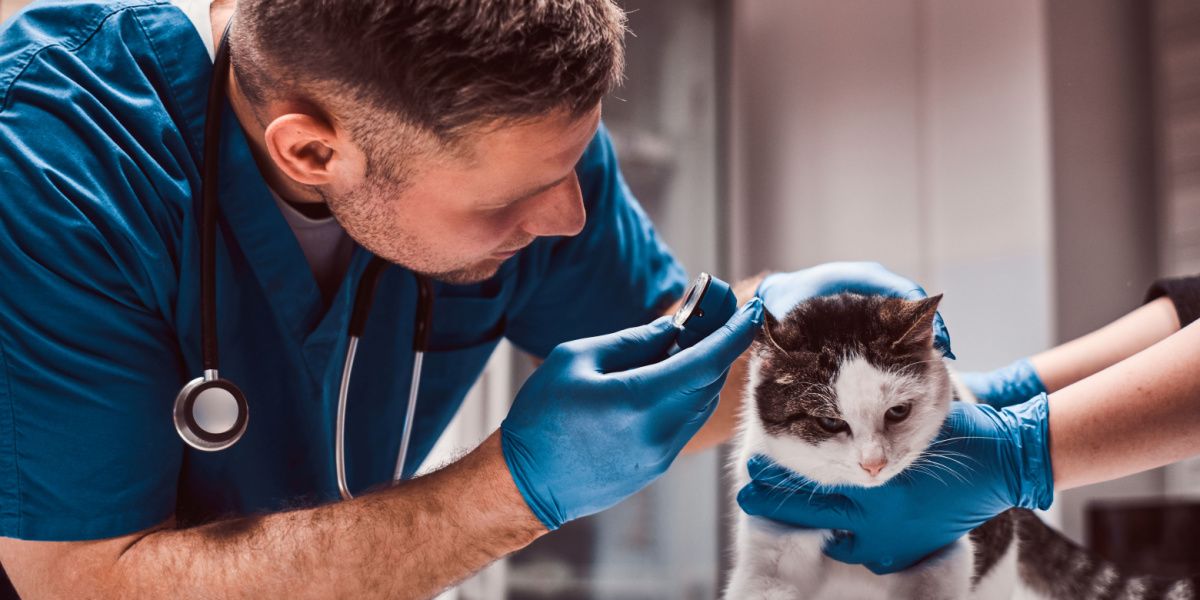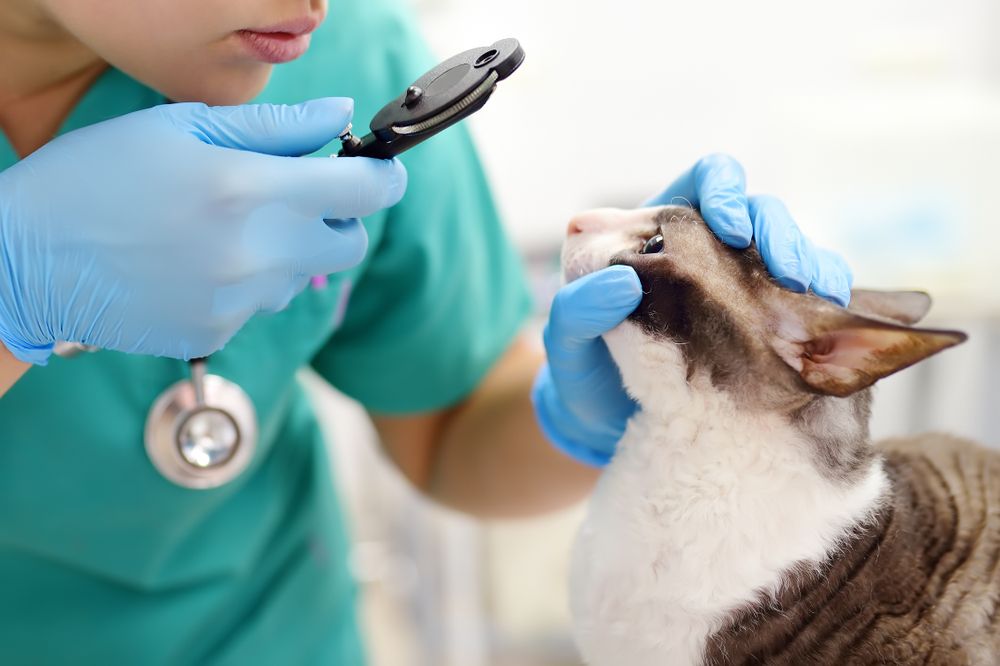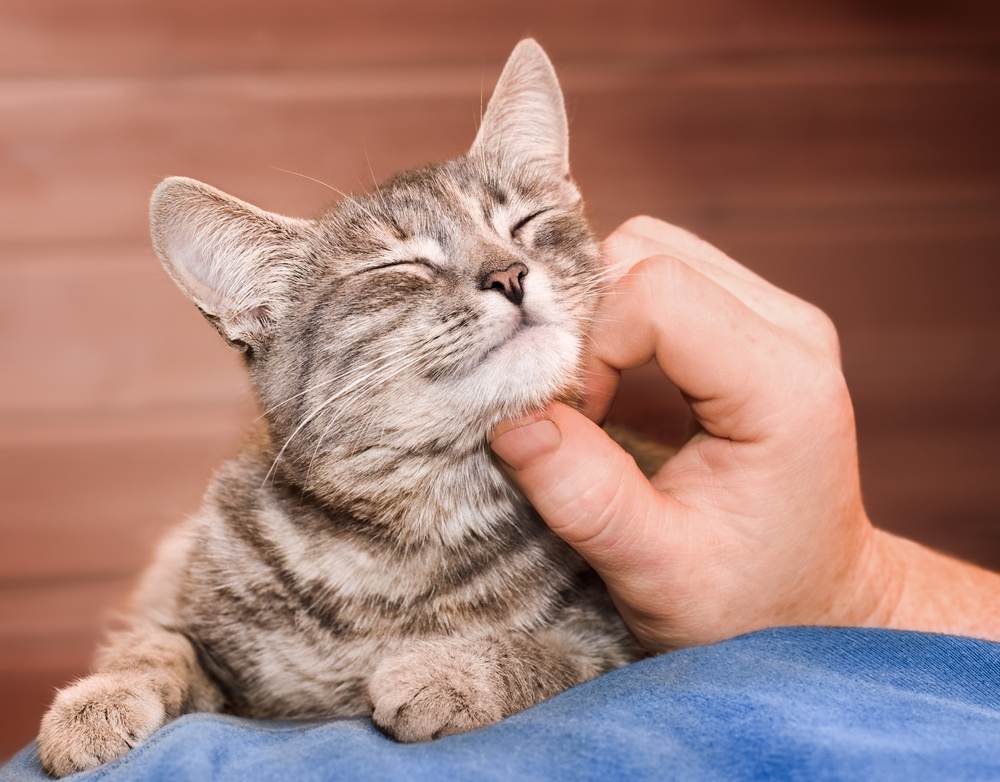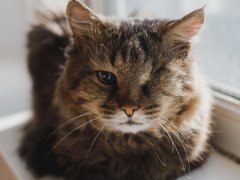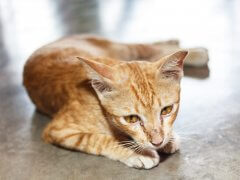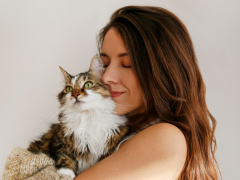Quick Overview: Horner’s Syndrome in Cats
Horner’s syndrome in cats describes a combination of symptoms, it is not a disease in itself. Symptoms arise from damage to part of the autonomic nervous system, called the sympathetic nervous system. This part of the nervous system is responsible for many functions in the body, but particularly responding to fight or flight situations. Damage to these nerves can result in symptoms affecting one side of the face, which is what we describe as Horner’s syndrome.
There are many causes of Horner’s Syndrome in cats, which we’ll discuss now.
Causes of Horner’s Syndrome in Cats
The sympathetic nervous system can be divided into different areas:
- Central Segment – the brainstem and neck
- Preganglionic Segment – the neck and ear
- Postganglionic Segment – from the ear to the eye
Damage to any are of the neck, chest or head can therefore potentially damage a part of the sympathetic nervous system and lead to Horner’s Syndrome. This is why there’s such a variety of potential causes.
Here are some common causes of Horner’s Syndrome in cats:
- Vehicle/car accident: Being hit by a car commonly causes blunt force trauma to the head or chest. This leads to inflammation or damage to many structures.
- Neck trauma: Bite wounds to the neck are a common cause of Horner’s syndrome in cats, as they cause inflammation and infection around vital nervous structures.
- Infection of the middle ear (otitis media): Ear infections are very common in cats. When these affect the middle section of the ear, they can cause inflammation to nearby nerves.
- Tumor of the chest, neck or brain: Any tumor involves these areas, whether benign or malignant, may cause compression of nerves.
- Diseases of the eye: Eye conditions that affect the eye itself or behind the eye (retrobulbar) may cause inflammation to the sympathetic nerves around the eye.
- Intervertebral disc disease: A herniated or ‘slipped’ disc will often cause nerve compression and damage.
- Blood clot: A blood clot or embolism may cause blood damage in nerve tissue, resulting in Horner’s syndrome symptoms.
Symptoms of Horner’s Syndrome in Cats
Changes to one side of the face and eye are the common signs of Horner’s Syndrome.
The symptoms of this syndrome will often appear on only one side of the head, the side with the damaged sympathetic nervous system. It’s rare for it to affect both sides. It’s worth bearing in mind that there may be other injuries if a blunt trauma or chest injury is suspected apart from the signs of Horner’s Syndrome.
The common symptoms of Horner’s Syndrome in cats include:
- Constricted pupil (miosis)
- Drooping of the upper eyelid (ptosis)
- Sunken appearance to eye (enophthalmos)
- Protrusion or redness of the third eyelid
- Increased heat and colour around the head and ears of the affected side
Complications of Having Horner’s Syndrome
Cats can get Horner’s Syndrome from a variety of conditions. Sometimes all that might be noticeable is the symptoms of described above. However, some cats may have suffered from severe trauma or may have a tumor. These cats may have multiple symptoms apart from Horner’s Syndrome such as:
- Difficulty breathing
- Collapse/shock
- Blood loss
- Fractures
- Fever
- Seizures
This isn’t an extensive list, but just some examples of complications that may be seen with cats that have Horner’s Syndrome.
Diagnosis of Horner’s Syndrome in Cats
Horner’s Syndrome itself will be obvious to your vet from the history and clinical symptoms. However as we know, this is only a syndrome and not a disease itself. There are many causes of Horner’s syndrome so your vet will need to do a thorough clinical exam of your cat.
This may include a neurological exam and an otoscopic exam (examination of the ears). Your vet will differentiate Horner’s syndrome from other conditions that cause similar signs such as Key-Gaskell syndrome and other neurological disorders.
A phenylephrine eye drop may be used on the affected eye to cause pupil dilation. This may help your vet to determine which segment of the nerve is damaged. For cats that have other symptoms or injuries, your vet may investigate further. They may perform blood and urine tests, along with x-rays and ultrasound. In cases where severe brain trauma or tumors are suspected, a CT or MRI may be performed.
Treatments for Horner’s Syndrome in Cats
Horner’s Syndrome itself isn’t harmful and nerve damage should resolve over time – although this may take several months. Veterinarians will often prescribe lubricating eye drops to affected cats. This is because these patients are often unable to blink properly in the affected eye, which could predispose them to eye ulcers. Eye drops will help to prevent this from occurring.
However, it’s the underlying cause of the Horner’s Syndrome that is the most concerning thing and the treatment will depend on this.
For mild injuries or bites, your vet may prescribe broad-spectrum antibiotics, anti-inflammatories and rest. Infections such as middle ear infections may require sedation or anesthesia to examine the ear properly and will likely require antibiotics and anti-inflammatories also. It’s important to never attempt to clean an infected ear yourself as this can cause further damage if the ear drum is ruptured.
Car accident injuries can range from mild to very severe, and a lot of cases require hospitalisation. Your cat may need pain relief, antibiotics and intravenous fluids and some cases may even need surgery (e.g. fractured limb). Surgery may also be needed on operable tumors found in the chest, neck or brain. For blood clots, you vet may prescribe anti-clotting medication.
Cat Care Tips
Cats with Horner’s Syndrome may need some help navigating their environment, eating and drinking.
Horner’s Syndrome will usually resolve on its own, especially if the underlying cause is treated. There are some things that you can do at home to help care for your cat when they have this syndrome.
Keep To Their Medication Schedule
Give them their medication as instruction and don’t miss any doses. This will likely include regular eye drops to keep their eyes lubricated and prevent eye ulcers.
Easier Access to Resources
Cats that have Horner’s Syndrome, may find it more difficult to access food, water and their litter box. Help them to access their food and water bowls if necessary or move them if needed. They may need extra tasty food if they’ve recently had surgery or suffered severe injuries.
Keep them Indoors if Needed
It may be necessary to keep your cat indoors while they’re recovering, to make sure they’re safe and have all their needs provided for. This is especially the case if your cat has broken bones or is recovering from surgery.
Prevention of Horner’s Syndrome in Cats
Horner’s Syndrome is caused by many different things. Many of these conditions can’t be prevented but there are some risk factors. Cats that go outdoors are at higher risk of trauma (such as car accidents) and injury (such as cat bites). In general, older cats are more likely to get tumors.
Keep your cat in good health by feeding a complete cat diet and maintaining a healthy weight. Ensure that they receive regular veterinary care throughout their life, which will help to pick up conditions early.
Frequently Asked Questions
What is the most common cause of Horner's syndrome in cats?
Trauma to the head or neck are common causes of Horner’s syndrome in cats. The most common cause of trauma is a car/road traffic accident.
How do you treat Horner's syndrome in cats?
The treatment for Horner’s syndrome in cats depends on the underlying cause. Most cats will need eye drops to prevent damage to the eye. Some cases will need anti-inflammatories or antibiotics (e.g. for a cat bite) while others may need surgery (e.g. tumor).
What are the 3 classic signs of Horner's syndrome?
Classic signs of Horner’s syndrome include; constriction of the pupil, droopy upper eyelid and sunken appearance to the eye. You may also see third eyelid prolapse.
Is Horner's syndrome in cats fatal?
No, Horner’s syndrome itself isn’t fatal but the underlying causes may be. Severe trauma to the brain or neck is potentially fatal and emergency veterinary treatment should be sought.
